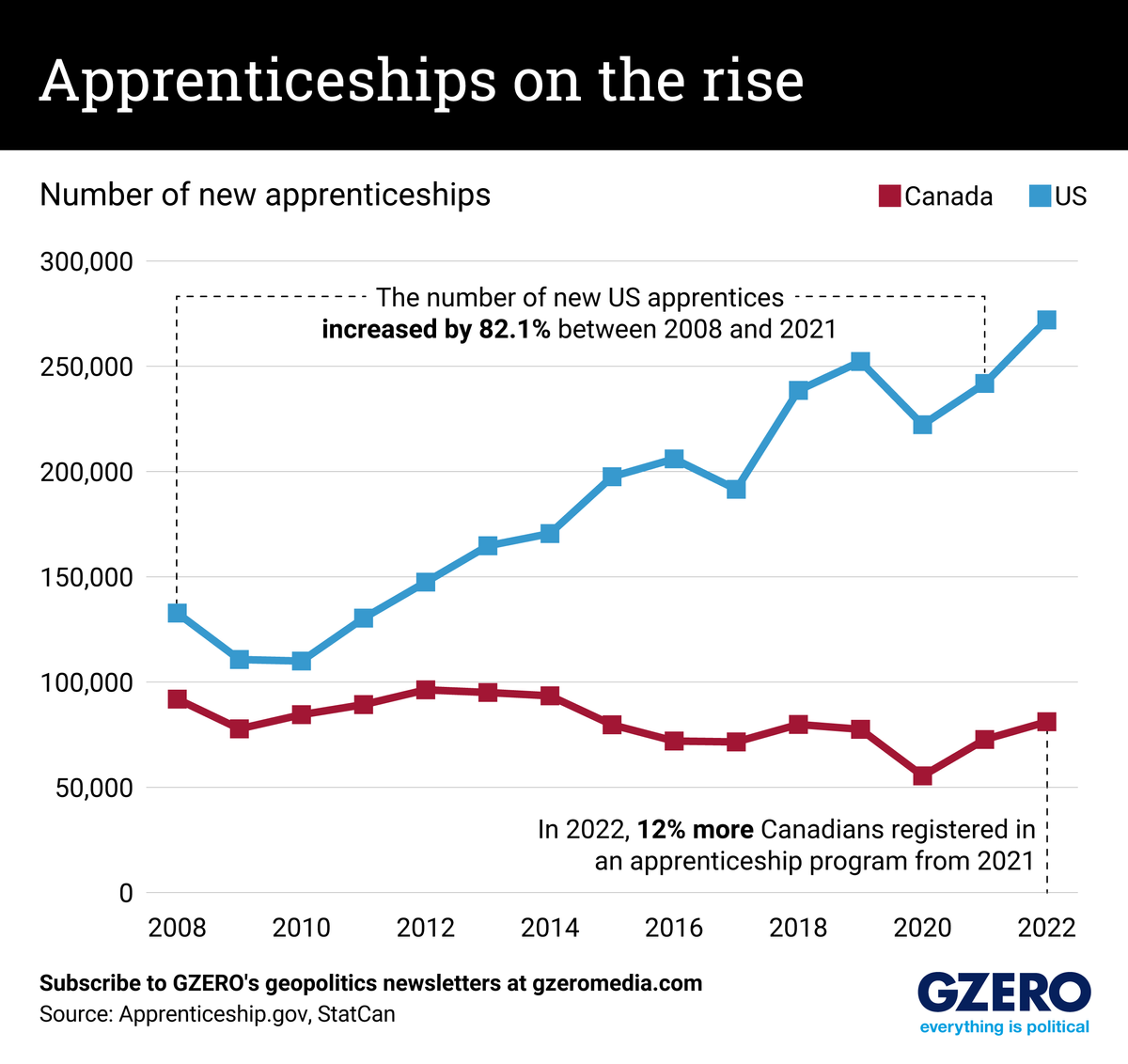Fresh out of Barnard College with a degree in political science, Riley is a writer and reporter for GZERO. When she isn’t writing about global politics, you can find her making GZERO’s crossword puzzles, conducting research on American politics, or persisting in her lifelong quest to learn French. Riley spends her time outside of work grilling, dancing, and wearing many hats (both literally and figuratively).
Whether it’s the price of college, the promise of the gig economy, or simply the desire to get paid while training, apprenticeships are having a moment. In the US, this surge has coincided with an 8% drop in undergraduate college enrollment; in Canada, it comes amid high youth unemployment.
In short, young people want options for brighter futures. As a result, apprenticeships are increasingly becoming an alternative to expensive four-year college degrees, or as a way to forge new careers mid-life. Apprentices get all the benefits of other employees, including wages, while getting valuable on-the-job training.
After dipping during the pandemic, the number of apprenticeship registrations jumped 12% in 2022 to an all-time high in Canada. In the US, they rose 22% between 2020 and 2021 and saw an 82.1% jump between 2008 and 2021.
But this isn’t just a COVID-fueled trend. SAIT, one of Canada's largest post-secondary institutions for apprenticeships, has seen a 20% increase in enrollment over the last two years. So apprenticeships are likely to increase even more in the coming years.






